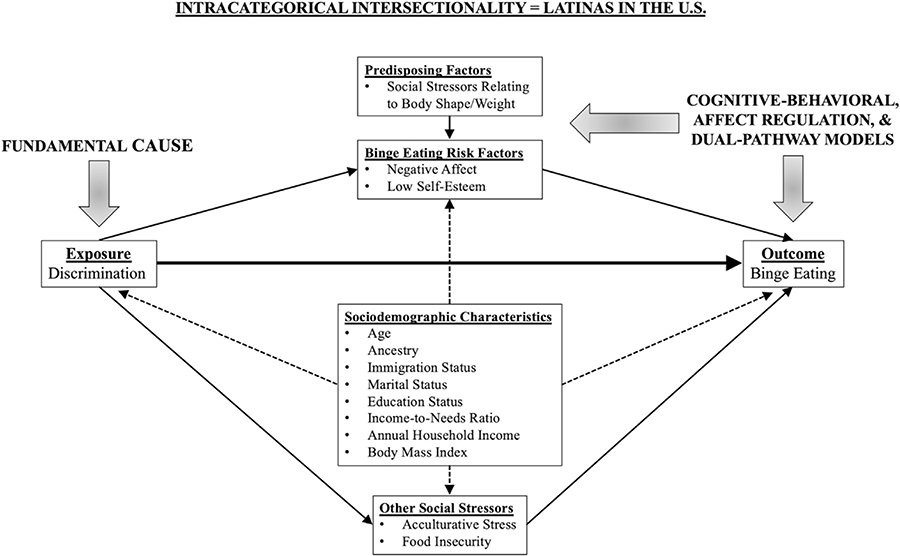Fig. 1.
Conceptual model detailing hypothesized relationship between perceived everyday discrimination and binge eating among Latinas in the U.S. model is informed by fundamental cause theory, in that we conceptualized discrimination as a “root cause” of binge eating (including all mediating pathways); intracategorical intersectionality, in that we focused on a fundamental cause related to interlocking systems of power/oppression shaping the lives of those at a particular social location (while acknowledging important within-group diversity); and cognitive behavioral, affect regulation, and dual-pathway models, leading etiologic models of binge eating that identify negative affect and low self-esteem as important risk factors, with social stressors relating to body shape/weight as upstream predisposing factors. Note: Model is not a directed acyclic graph, as not all arrows/relevant variable are included, and arrows do not necessarily represent causal relationships. For example, we do not mean to imply that sociodemographic characteristics “cause” discrimination but rather are related through macrosocial processes of racialization, immigration policies and so on (hence the dashed lines).

